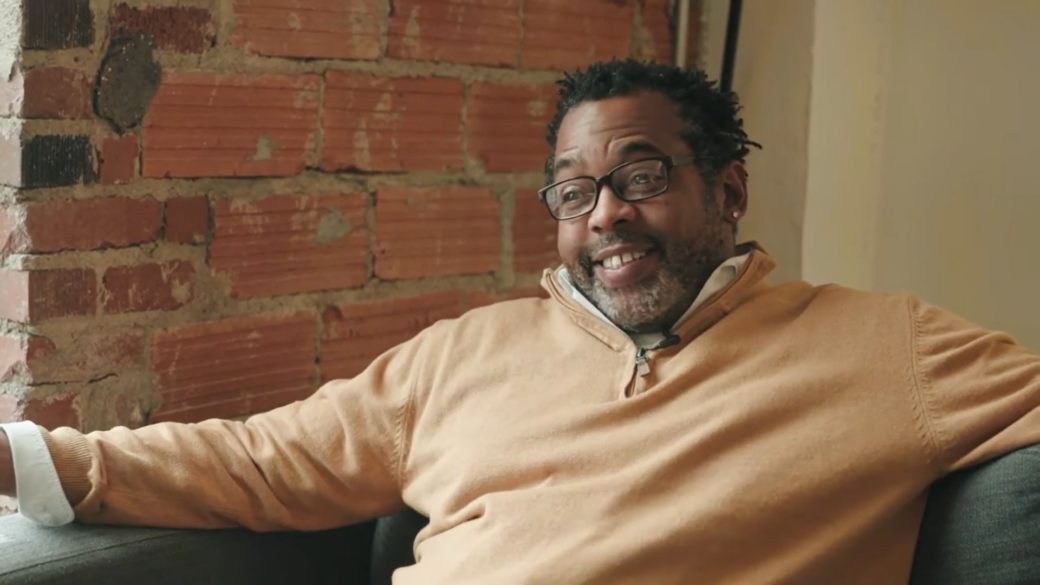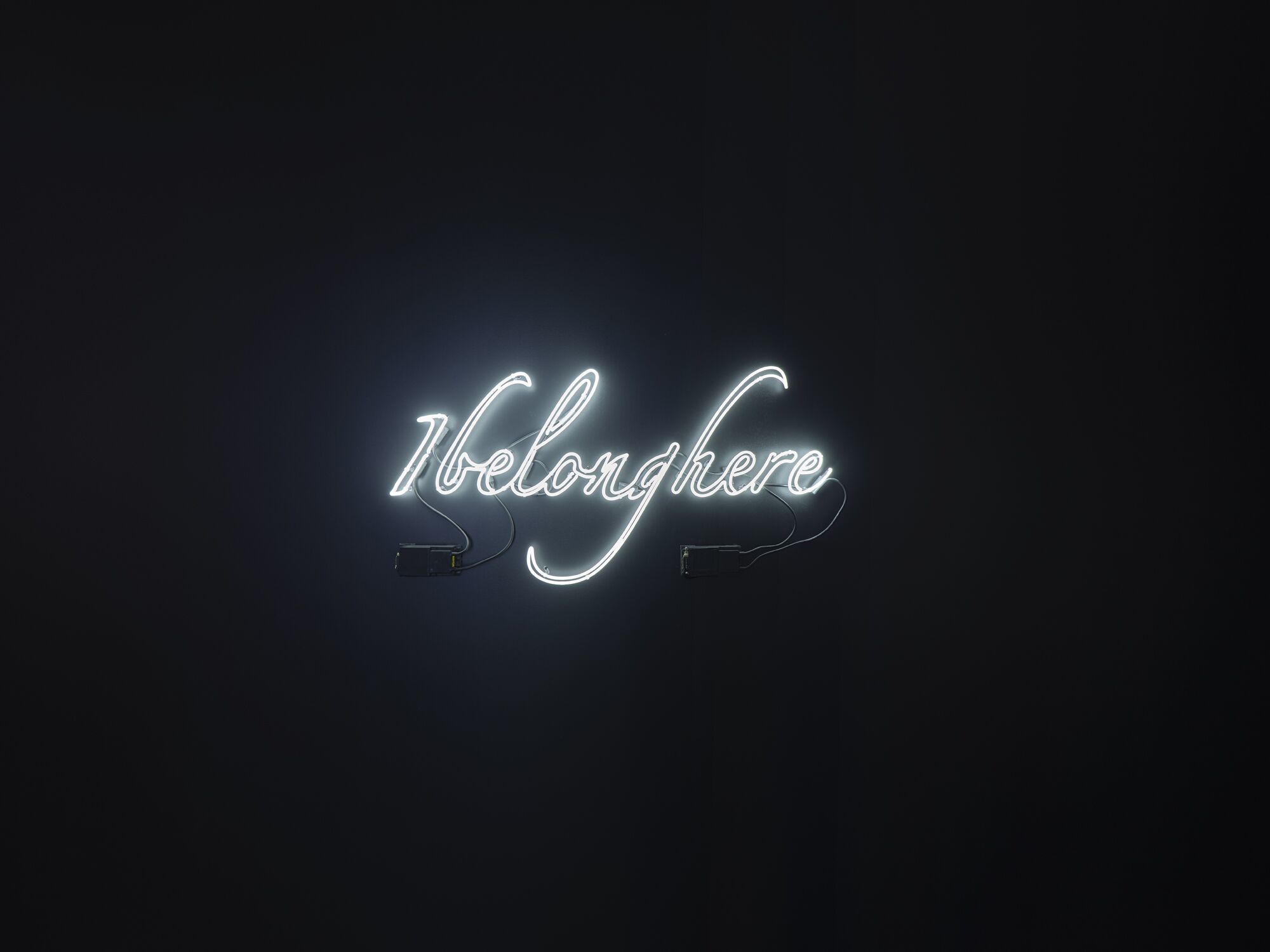
The renowned Oklahoma author on the power of poetry during a pandemic

The poetry of Quraysh Ali Lansana traces geographies both internal and external. Over the last few decades, the Enid-born author and educator has built a body of work meditating in part on the idea of home and its many complications. With collections like The Walmart Republic (2014) and Mystic Turf (2012), the artist's poetic eye wanders from the Oklahoma prairie to the skyscrapers of Chicago, the deep South and points in between.
"I like to say that my first poems were written on the big sky of Oklahoma," Lansana said. "I was essentially dreaming about what life was like somewhere else under the same sky."
In an eighth-grade English class, Lansana made contact with the poetry of Gwendolyn Brooks, one of the most revered and influential poets of the 20th century, who would go on to become his mentor at Chicago State University. This discovery dovetailed with the advent of hip hop in the mid- to late '70s, delivering a one-two punch that would change the course of Lansana's life. "I didn't just experience the power of words in a different way," he said. "I learned there were different ways to play with words that actually have power."
To help facilitate a sense of power during a time when many of us feel powerless, Oklahoma Contemporary is partnering with Lansana for a special National Poetry Month project. Inspired by Tavares Strachen's I Belong Here, on view in our delayed Bright Golden Haze exhibition, we're asking readers to contribute poetic thoughts on what belonging means to them. Tell us in a few creative lines, and your submission may be selected and edited by Lansana for a crowdsourced poem to debut with a virtual reading at the end of the month.
In the meantime, Lansana sat down for a #ThursdayThree installment to talk about the power of the art form and the poets he's turning to in this current moment of crisis.

What's the value of poetry during a pandemic?
Poetry has often been a source of comfort or solace or inspiration in times of crisis — or in times of great joy, whether that’s a wedding or a funeral. I believe, in this moment we’re in, that poetry as an art form has the ability to help folks find their own personal solace and personal comfort. It's also a mode for imagining and remembering in this situation — remembering there are other possibilities. There’s life beyond, and even in the midst of, this pandemic.
I believe poetry happens every day. We just don’t always recognize it. So one of the things I’ve had to think about and adjust to is, "What is the poetry of this moment for me?" Obviously I no longer see my students face to face. I no longer see my friends in person. I no longer see my fellow Tulsa Artist Fellows in person or engage with my studio. So what can I give birth to in this moment with my art form? That’s been both poems that have been critical of the way I believe the federal and state governments have handled the crisis, and also poems and art that have forced me to go within a little further about the things that are important to me — to really distill those things.
I think there’s really no finer art form than poetry to do that: to internalize and interpret your own feelings, your own emotions, while also taking stock of the self in context of the whole, to the wider community, to the globe in this case. That’s part of what makes poetry so powerful. It's interpretive. There’s something universal that everyone can gain from a poem, even though the poet may have meant something very specific to themselves or their situations.

Who are the poets you're turning to right now?
Ms. [Gwendolyn] Brooks is always close by. And not solely because I was her last protégé, her last student, but because of the specificity and the precision involved in her unpacking and observing life, and Black life in particular, with wide open eyes and a sharp vision.
I’ve also been reading some local poets. Greg Carey, I’ve been reading some of his work. I’ve also read some work by Etheridge Knight, and then my good friends Tyehimba Jess and Gregory Pardlo. And also Lucille Clifton as well. I’ve been reading specific poems and groups of poems from those individual authors, with the exception of Ms. Brooks and Ms. Clifton who are part of my Mount Rushmore. But I've been reading very specific works from the others to sort of perform, in some ways, a sort of escape while being in touch with other sorts of feelings or emotions or sensations.
Reading poetry is a return to joy. Particularly with Ms. Clifton’s work, which is always very grounded in spirit, even when she was writing about how amazing her hips were [laughs]. It’s rooted in a spiritual grounding that brings me some comfort right now. She went into remission six or seven times before cancer finally took her, and she has some incredible, moving poems about her battles with cancer. There was an incredible light that emitted from her, even while she was in the midst of battling. She’s an incredible source of strength and light as a memory of my interactions with her and who she was in the world. That is reflected in her poems
You're helping Oklahoma Contemporary put together a crowdsourced poem for National National Poetry Month. In your estimation, what makes for a truly killer line of poetry?
I would say musicality, tone and certainly the strength of the line in terms of message. I believe in a balance of message and aesthetic, where one is not more heavy-handed than the other. I believe a really solid line of verse is very much that same sort of thing. Bring me in, immerse me in the world of the line. Immerse me in the music and the tone and the message, without over-poeting. So the line presents a kind of balance, and it does the work of allowing the reader to be immersed and for the language to resonate without being told, "This is what you need to do now." I believe art should move us to think, not tell us what to think.
Feeling inspired? Spend some time meditating on what "belonging" means to you. Then write a couple creative lines about it — no more than 35 words, please. Submit them to info@okcontemp.org with your name and location by April 24, or comment on a post about the project on any of our social media platforms, and you might hear your own words read by Lansana at the end of the month.
Images: Photo of Quraysh Ali Lansana courtesy of Tulsa Artist Fellowship and Tri-City Collective. (Source: Tulsa Artist Fellowship spotlight video, YouTube.) Tavares Strachan. I Belong Here (White), 2012. Blocked-out neon and glass. 24 x 48 in. Courtesy Blanton Museum of Art, The University of Texas at Austin, Gift of Anthony Meier in honor of Jeanne and Michael Klein, 2014. Photo by Alex Marks.
Return to New Light.









